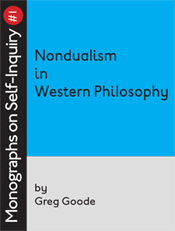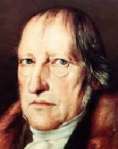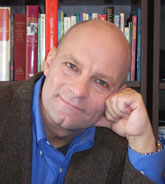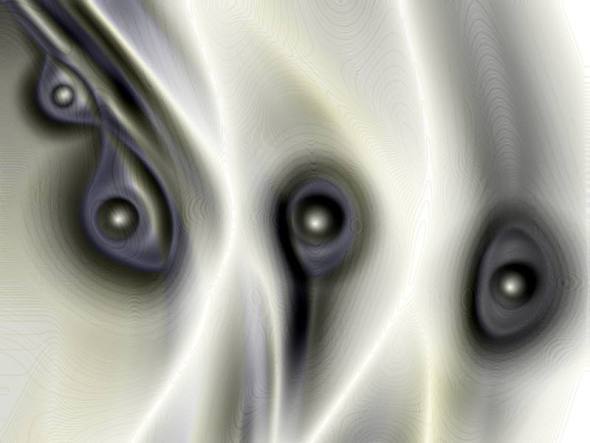Greg Goode – Nondualism in Western Philosophy
 I am very happy to be able to bring you this special post. With Greg’s permission, we are serializing an updated version of his book Nondualism in Western Philosophy (which is not available anywhere else on the web for free). The book will appear in three parts. Without further ado, here is Part 1.
I am very happy to be able to bring you this special post. With Greg’s permission, we are serializing an updated version of his book Nondualism in Western Philosophy (which is not available anywhere else on the web for free). The book will appear in three parts. Without further ado, here is Part 1.
This is a series of pointers to how the Western approach can assist with one’s self-inquiry. It is less a historical survey, and more a collection of Western views that might serve as tools for inquiry, along with suggestions on how these tools might be used. The conclusion consists of a practical, forward-looking dialogue. I haven’t included every philosopher in the Western tradition to have written something that might be considered nondual. Instead, my choices are pragmatic. I’ve chosen the writers I have found most helpful in skillfully deconstructing the classic dualisms that seem to block people doing nondual inquiry.
So for example, the well known Heidegger and Nietzsche are not covered, though they wrote several things that can be helpful. Yet the lesser known writers Brand Blanshard and Colin M. Turbayne are covered, as I find that readers may regard their approaches as helpful.
–
Nondualism
Nondualism is an experience, a mode of existence of the self and world, and a metaphysical view about reality. As an experience, it is a sweet, nonobjective sense of presence, of borderlessness, and lack of separation. As a mode of existence of the self and world, it is said to be a matter of fact. As a metaphysical view, nondualism holds that reality is not composed of a multiplicity of things. This seems vague, and it is because beyond this point, the varieties of nondualism disagree. If reality is not a multiplicity of things, is it then just one thing? Or less? Just what is reality? Some nondualists say that reality is awareness. Some say it is voidness. Some say it is a net of jewels, where each jewel is composed of the reflections from all the other jewels. And some nondualists say that the nature of reality is that it has no nature.
–
What’s Wrong with Dualism Anyway?
So why is nondualism a goal? Does it feel better? Is it more true?
Most of the philosophers who write on nondualism argue that dualism falsely claims to be an accurate picture of our experience. They also argue that it causes suffering. These are two slightly different approaches.
Nondualism’s “false claim” argument challenges dualism’s claim to correctly represent reality. Dualism claims to be a view about how things really are, but when the view and its presuppositions are looked into, they are found not to be in accord with our experience. Our experience, say nondualists, is truly without borders, edges or separation. Therefore, the notion that the world is made up of divisions between self and other, good and bad, here and there, past and future, does not make sense. We only seem to experience these divisions. These divisions do not really exist, so we do not really experience them. Nondualism, it is argued, can correct the misinterpretation of our experience and restore our original wholeness.
Nondualism’s “argument from suffering” has to do with dualism’s effects – dualism leads to suffering and misery. Nondualists feel that a dualistic and divided experience of the world results in feeling separated (separated from what we take to be external objects, other people, the world, etc.). Feeling separated leads to feeling finite and vulnerable. It leads to suffering. This can be alleviated: a deep intuitive understanding of our nondual, unbroken experience is the end of the experience of separation. Therefore it is tantamount to the end of suffering.
_
Nondualism East and West
Eastern and Western approaches to nonduality reflect the more general differences between Eastern and Western approaches to philosophy. Eastern philosophy is most often pursued within the context of the Eastern spiritual traditions. Western philosophy can occasionally be found within Western spiritual traditions, but it is much more active outside them.
Eastern philosophy has very strong nondual traditions, which include Taoism, several forms of Buddhism, and Advaita Vedanta (the nondual extension of Hinduism). These traditions are also explicitly “soteriological.” That is, their purpose is to resolve the big questions of life and death, and to alleviate suffering. The experiential resolution of these matters is regarded as liberation or enlightenment. And the philosophies themselves are illustrated by hundreds of stories in which teachers assist students on their quest.
Western philosophy was originally practiced in a very similar way. “Know thyself” was inscribed on the forecourt of the Temple of Apollo at Delphi in ancient Greece. Practiced famously by Socrates, philosophy was engaged as a sort of care of the self, or an investigation into the way the self and world exist. The philosophies of the Stoics, the Epicureans, the Skeptics, and Boethius were avowedly therapeutic. But after the 18th century, philosophy became more and more academicized; it was removed from practical, personal and transformational use. Western philosophy’s goal became to discover the grounds of scientific truth and the limits of mans’ ability to know it.
Western philosophy became more a scientific than a salvific enterprise. These days, there is not a generally accepted goal in Western philosophy corresponding to liberation or enlightenment. Whereas Eastern philosophy is practiced in temples and ashrams, Western philosophy is studied in libraries and academies. The West has most often left its life-and-death questions to the churches, cathedrals, synagogues and hospitals.
–
Western Mysticism
Before examining the nondualist strands in Western philosophy, we should say a few words about Western mysticism. The writings of the great Western mystics tend to overlap both philosophy and religion. Their writings are not as logically precise as philosophy; neither do they require the same level of faith as religious writings.
Mysticism is often pursued by the nondual inquirer for the depth of its wisdom and how it penetrates man’s most subtle experiences. To pursue the mystical path, one does not so much follow a line of argumentation; rather one enters openly and whole-heartedly into experience. Mysticism and philosophy compliment each other. Many people find it more effective to engage both modes than either one alone.
Notable Western mystics and their works include The Gospel of Thomas and other works in the Nag Hammadi Library; the writings of Rabbi Akiva (40-135); The Zohar (150CE) by Shimon Bar Yochai (fl. 135 – 170); the Sepher Yetzirah; or The Book Of Creation (before 6th Cent.); Dionysius, the Pseudo-Areopagite (BCE 500); Origines Adamantius (Origen) (c. 185-254); the monks of the Philokalia (c200-600); Meister Johannes Eckhart (1260-1327/8); The Cloud of Unknowing (14th Cent.); Theresa of Avila (1515-1582); St. John of the Cross (1524-1591); or Brother Lawrence (c. 1605-1691).
–
–
How Nondualism is Done in the West
Proving the nondual nature of reality is not an overall goal for Western philosophy. A few philosophers have created nondual metaphysical theories; and others have argued against metaphysics altogether. But most philosophers who dissolve or dismiss dualities are not nondualists. The dualities left in the dust by these writers are merely casualties of their other work. In fact, the cleverest and most persuasive arguments tend to come from the works focused on narrow and specific issues, and don’t discuss all of reality at once. These arguments can be very helpful in the course of one’s nondual inquiry. As the old-time news editors used to say, “We can use it!”
We will examine some of the best known arguments that can be helpful in nondual inquiry, even if a given argument is not used by its author in to establish nondualism. Sometimes it is most effective to proceed piecemeal. Most of the well-known Western arguments take one (or more) of the following broad strategies.
A. Monist philosophies. Monist philosophies argue that the universe is truly made from only one kind of thing. An example would be that the entire universe is only God or consciousness. These kinds of views are the ones most similar to Eastern nondualism. Most monist arguments proceed by building systems, not so much by employing clever logic and dialectics.
Some of the most famous Western philosophies are the great monisms, which claim one kind of thing as the basis or  true nature of everything else. In some monist philosophies, the one kind of thing is numerically single. Ancient examples of this single-style monism include the theory of Parmenides (b. 510 BCE), in which everything is “the One,” i.e., one unchanging substance discernible only through reasoning, and the more lively view of Heraclitus (540-475 BCE), in which “All is flux.” Hegel is a grand modern example with his system of absolute consciousness.
true nature of everything else. In some monist philosophies, the one kind of thing is numerically single. Ancient examples of this single-style monism include the theory of Parmenides (b. 510 BCE), in which everything is “the One,” i.e., one unchanging substance discernible only through reasoning, and the more lively view of Heraclitus (540-475 BCE), in which “All is flux.” Hegel is a grand modern example with his system of absolute consciousness.
Other monist philosophies are not as “nondual.” That is, their one true kind of existent is numerically multiple. The one kind of thing is found in many identical parts or different places. Such ideas are found among the ancient atomists like Leucippus (c. 450 BCE), who argued that the world is made out of many identical particles. This notion is remarkably close to various modern scientific theories, which have proposed various kinds of elementary particles as the ultimate constituents of the world.
B. Reductive philosophies. Reductive philosophies hold that the universe is made of fewer kinds of things than we think. Their goal is not to end up at nondualism, but rather to show that certain kinds of things that we take for granted do not exist and can be reduced to other things. A reductive philosophy might argue, for example, that the world is not really made up of external objects, ideas and minds, but can be accounted for by ideas and minds only. Other reductionists are materialists.
Since reductive philosophies do not try to rid the world of all dualisms at once, they can focus more attention on particular issues. Reductive arguments tend to be dialectically clever and precise. They end up doing more damage to a duality such as “mental vs. physical” than the gentle suggestions of a soft-focus monism. Democritus, Berkeley, Locke and more recently, Paul and Patricia Churchland provide strong examples of reductionism.
C. Anti-metaphysical philosophies. Anti-metaphysical philosophies argue against any kind of metaphysical basis whatsoever. The classic anti-metaphysician was Sextus Empricus (160-210 CE), the Ancient Greek Pyrhhonian skeptic with one of the most radical, deconstructive arguments in the entire Western tradition – that we can reach a state of mental calm and peace if we suspend judgment on all claims, issues and conclusions, and follow impressions, inclinations and conventions as they arise. Even belief is not necessary; it leads to agitation.
Anti-metaphysical philosophy is also called “anti-essentialism” or “anti-foundationalism” and became a trend in the 20th century. Its most famous advocates are John Dewey, Ludwig Wittgenstein, W.V.O. Quine, Jacques Derrida, Michel Foucault, Donald Davidson, Nelson Goodman and Richard Rorty. They argue in a variety of ways that we just don’t need metaphysics anymore, along with its nest of dualisms.
Anti-metaphysical philosophers argue that it makes no sense to claim what something really is. They argue equally against monist and reductionist claims that certain things are metaphysically basic. Anti-metaphysics challenges anything’s claim as basic, fundamental, as constituting the ground of anything else. Instead of discussing what we think the universe really is, anti-metaphysical philosophies suggest we come up with new ways of thinking, speaking and experiencing. This, they say, is the route to greater happiness and social harmony.
Anti-metaphysics can be of great assistance in one’s nondual inquiry. If one loses conviction in the truth or accuracy of metaphysical pronouncements about the world, the body and the mind, one is thereby freed from several sticky attachments. As free, we will not experience ourselves or the world in terms of the dualisms of mind/matter, good/evil, self/other, subjective/objective, appearance/reality, fact/value, free will/determinism, and so forth.
–
The Nondualist Reaction to Descartes
 Modern nondual metaphysics seek to ground our world and our experience in what reality truly is. These efforts historically began as a reaction to dualism, which is the view that reality consists of more than one kind of thing. The most prominent kind of dualism, inspired by Rene Descartes (1596-1650), holds that there are two kinds of existing things, physical and mental. Descartes’ monumental Discourse on Method (1637) is the classical statement of this kind of dualism. He begins with the mental side, whose reality he demonstrates by arguing that it is undeniable. He argues that “I think, therefore I am,” and proceeds as follows. Since I think, I cannot be mistaken about my existence. Even if I am being fooled by (what Descartes calls) an “evil genius,” I am nevertheless a conscious, thinking being. This establishes the mental side.
Modern nondual metaphysics seek to ground our world and our experience in what reality truly is. These efforts historically began as a reaction to dualism, which is the view that reality consists of more than one kind of thing. The most prominent kind of dualism, inspired by Rene Descartes (1596-1650), holds that there are two kinds of existing things, physical and mental. Descartes’ monumental Discourse on Method (1637) is the classical statement of this kind of dualism. He begins with the mental side, whose reality he demonstrates by arguing that it is undeniable. He argues that “I think, therefore I am,” and proceeds as follows. Since I think, I cannot be mistaken about my existence. Even if I am being fooled by (what Descartes calls) an “evil genius,” I am nevertheless a conscious, thinking being. This establishes the mental side.
Descartes argues for the physical side of the dualism by invoking God’s existence, and God’s nature as non-deceitful. God has given us the faculties that seem to perceive external physical objects. Surely God would not deceive us about the existence of physical things! Therefore physical things exist in addition to mental things.
Most versions of Western monism that come after Descartes accede to his distinction between mental and physical. Some monisms come down on the materialist side, others on the nonmaterialist side. Among materialist monisms, some suggest particles as the ultimate constituent. Other materialist monisms decline to specify just what kind of material or particle is the ultimate one, leaving that detail to the discoveries of science. Nonmaterialist monisms tend to favor consciousness or idea or Being or even God as basic.
–
*Stay tuned for Part Two and Part Three in a future post.
 Greg Goode has been a philosophical counselor since 1996 and has extensive experience with online consultation. As a philosophical counselor, Greg is nationally certified by the American Philosophical Practitioners Association, trained by Prof. Lou Marinoff, author of the well-known Plato Not Prozac! and by California State University, Fullerton’s J. Michael Russell —a true pioneer in the philosophical consultation movement.
Greg Goode has been a philosophical counselor since 1996 and has extensive experience with online consultation. As a philosophical counselor, Greg is nationally certified by the American Philosophical Practitioners Association, trained by Prof. Lou Marinoff, author of the well-known Plato Not Prozac! and by California State University, Fullerton’s J. Michael Russell —a true pioneer in the philosophical consultation movement.
Greg is a well-known innovator for having combined the ancient “direct-path” method of self-inquiry with modern electronic media. Nondual inquiry includes the powerful teachings of Advaita Vedanta and Mahayana Buddhism. Greg studied Advaita Vedanta through the Chinmaya Mission, Sri Atmananda, Jean Klein, and Francis Lucille. He studied the Mahayana teachings of Pure Land Buddhism through Jodo-Shinshu, and studied Chinese Middle-Way Buddhism through the lineage of the pre-eminent scholar of Chinese Buddhism, Master Yin-Shun of Taiwan, P.R.C., author of The Way to Buddhahood.
All text herein copyright Greg Goode, 2007. All rights reserved. Except for brief quotations in critical articles or reviews, no part of this monograph may be reproduced in any manner without prior permission from the author.
*This feature also showcases a digital abstract art piece from Sam Blight
This is a series of pointers to how the Western approach can assist with one’s self-inquiry. It is less a historical survey, and more a collection of Western views that might serve as tools for inquiry, along with suggestions on how these tools might be used. The conclusion consists of a practical, forward-looking dialogue. I haven’t included every philosopher in the Western tradition to have written something that might be considered nondual. Instead, my choices are pragmatic. I’ve chosen the writers I have found most helpful in skillfully deconstructing the classic dualisms that seem to block people doing nondual inquiry. So for example, the well known Heidegger and Nietzsche are not covered, though they wrote several things that can be helpful. Yet the lesser known writers Brand Blanshard and Colin M. Turbayne are covered, as I find that readers may regard their approaches as helpful.
_











Thanks so much for this gift, dear Greg!
Another wonderful feature, dear Matt, never one dull moment,
Love to you both, Maren
September 24, 2010 at 3:23 pm
Very nice sharing, thanks to labor!
October 12, 2010 at 4:07 pm
Namaste Greg:
The main objection we have with Advaita Vedanta is their stand on jivanmukti. This stand takes them out of the pure non-dual path. We are much more congruent with the Kashmir Shaivism Trika tradition.
I welcome you with great love and great respect.
Mahamandaleshwar Paramahamsa Swarupananda Vishwa Guru Maharaj Swami.
OM
November 13, 2010 at 8:22 pm
Hi
this is twice now i’ve landed on your blog in the last 3 weeks seeking completely unrelated things.
Great Data!
Keep up the great function.
December 8, 2010 at 12:36 am
Pingback: Greg Goode – Nondualism in Western Philosophy Pt.2 « Non-Duality America
This is most helpful for those of us who have studied Western philosophy in the past (or do so at present).
A clear, succinct refresher course to clear away once for all many of the isolated notions, half-digested ideas and inconsistent, one-sided systems of philosophy on which so many hours were spent, waiting in vain for the light at the end of the tunnel (a seemingly endless tunnel).
One thing did stick: “the truth is the whole” (said by Hegel?). May it all have served some useful purpose: clear thinking for one… and neti neti.
Thank you very much indeed.
April 24, 2011 at 8:59 pm
Thanks a lot for this article, Greg. And for that list of Western mystics. Checking out Brother Lawrence the Carmelite monk right now. Really, really digging it.
“The time of business does not differ with me from the time of prayer; and in the noise and clatter of my kitchen, while several persons are at the same time calling for different things, I possess God in as great tranquility as if I were on my knees.”
This reminds me of how, in Zen monasteries, the chef master — or Tenzo in Japanese — is often said to have the most important and valuable job of ’em all.
Sitting on a cushion? Pfft, who’re you trying to fool? You’re hungry, I’m hungry, so let’s eat.
But I digress. Off to Part Two I go!
June 1, 2011 at 1:33 pm